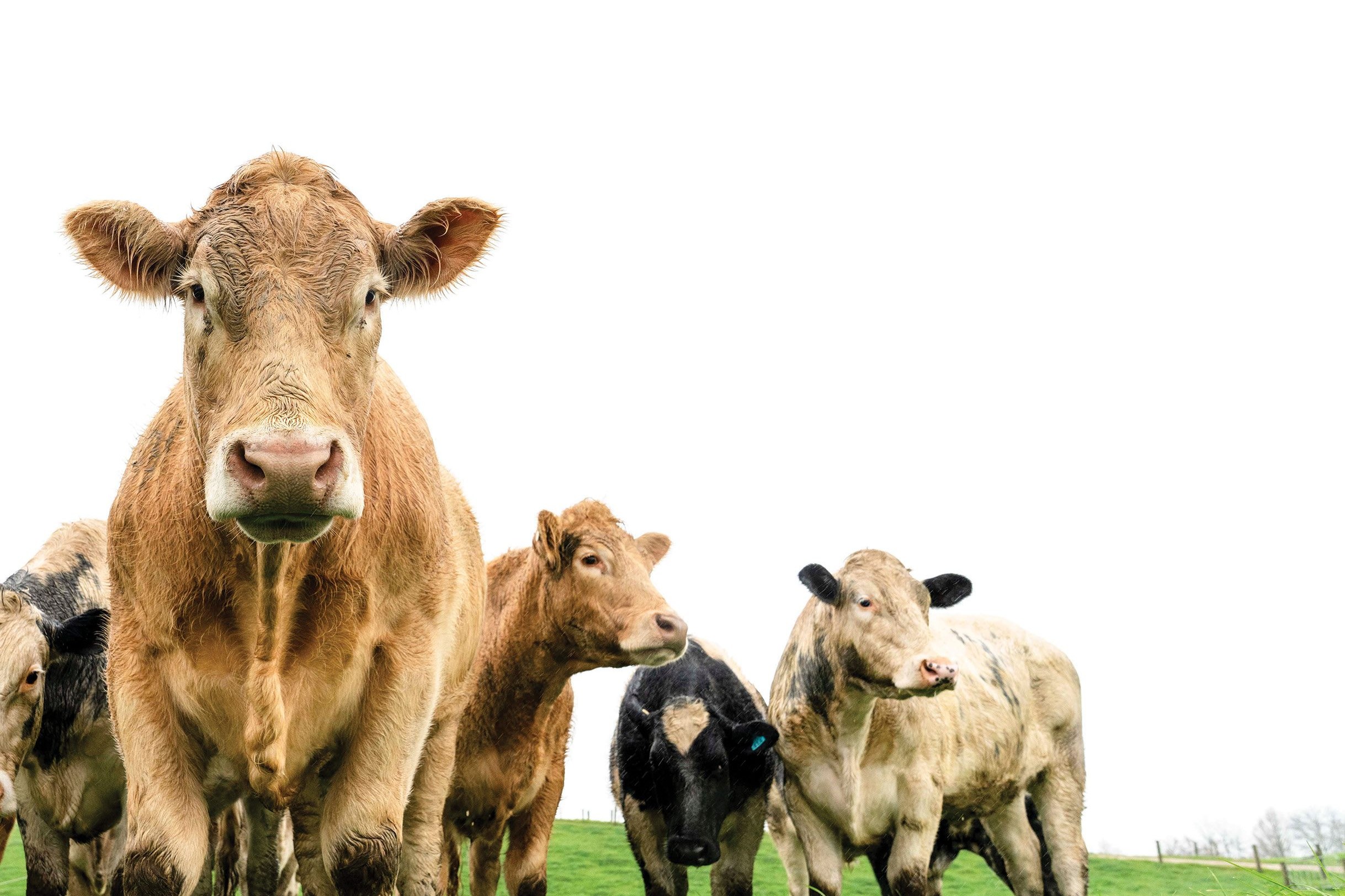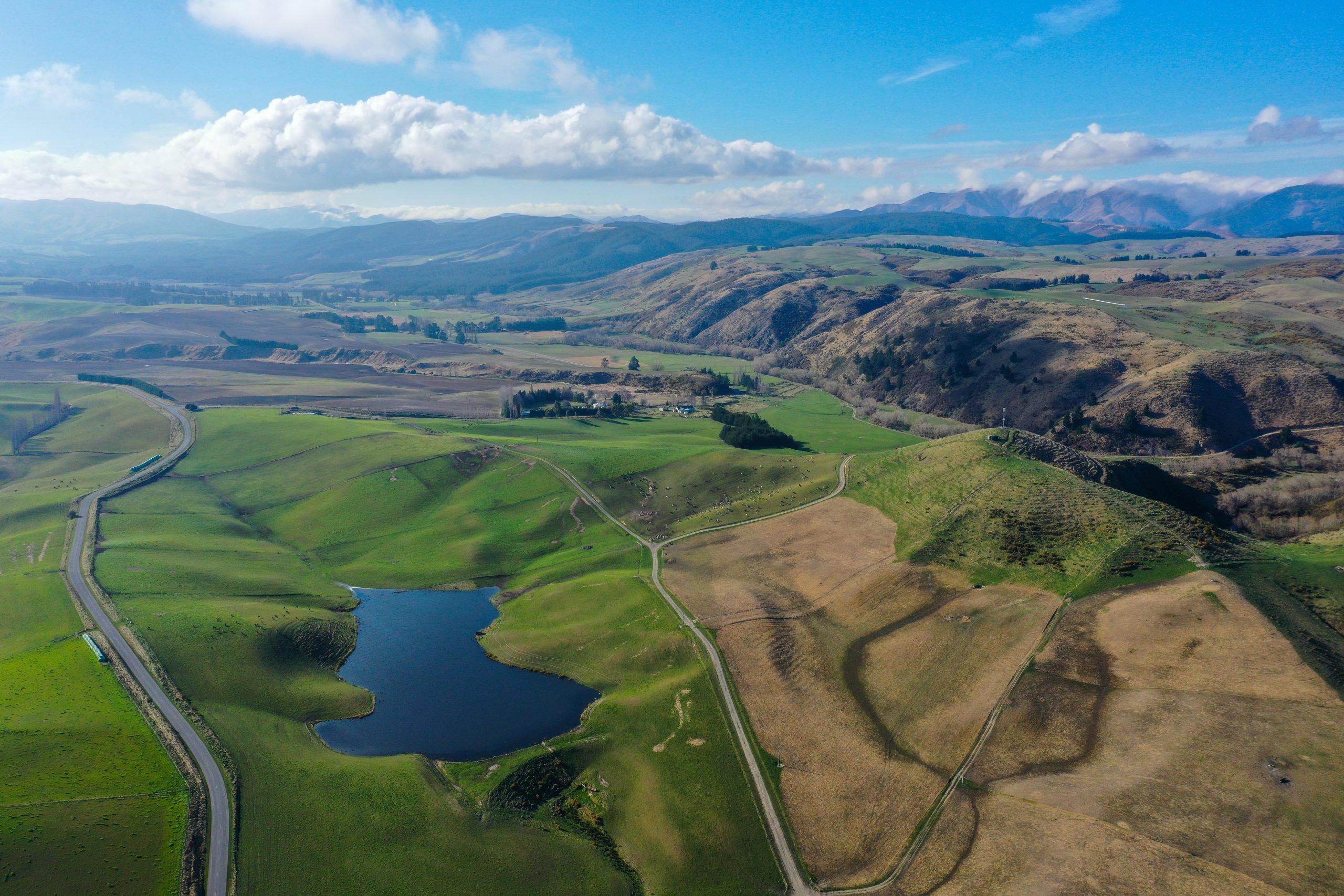Symbiosis on the farm
A Waikato farming operation is dependent on its dairy and beef units working together. By Claire Ashton.

Adrian and Pauline Ball – or ‘AB’ as he is known – farm 194 hectares near Tirau in the Waikato, with a 74ha beef finishing property nearby, both under the banner of Dennley Farms.
It is a symbiotic system between their beef and dairy units, which complement each other. They cannot do what they do on the beef block without it affecting the dairy side – and vice versa. Primarily, Pauline is in charge of the calf rearing, and AB oversees the dairy side. The farming couple were the winners of the Gordon Stephenson Trophy in 2019, as the top environmental farmers, at the Ballance Farm Environment Awards.
They have fenced off waterways, retired areas of the farm, and planted 8000 native trees, and of course the birdlife has returned to these areas.
“The beef block is 100% off-grid, run on solar and five years ago half of it was in maize so we set about turning it into a beef block. Our hope for this is that as we have 15ha of riparian planting, we will be able to get it to zero carbon.
“This block runs itself – I can bugger off for three days and there is no pressure, it’s nice and easy – you can’t get that out of dairy.”
No synthetic nitrogen is applied to grazing pasture, instead they are using chicken and goat compost and take a biological view to help build organic matter and sequester soil carbon, a strategy for offsetting nitrous oxide emissions.
Some nitrogen is used in the maize paddocks though, lucerne paddocks get a lot of potash, and there is a limited use of weed sprays. Hills Laboratories undertake soil tests onfarm, and the Balls are going to become aligned with the worldwide Savory Institute, who promote regenerative approaches to soil and land management. This will be part of the market-led programme supplying Silver Fern Farms.
AB sees themselves as ‘early adapters’, thus when the Government discarded the first He Waka Eke Noa proposal, it felt like “a real kick in the guts”, as they are a nature-positive farm, and their hard work wasn’t going to be recognised – they weren’t being valued for being proactive.
“We are always looking at ways of improving our soil and pasture, as the science catches up,” AB says. The farm neighbouring the beef block is in regenerative pasture, and AB is interested in going over and ‘having a dig’ to see what the soil does in the years ahead.
All surplus calves, averaging about 150, are retained and finished on the beef platform, a practice they started five years ago and onfarm breeds include Charolais, Angus heifers and Belgian Blues. They are using a particularly well-proven Charolais sire, Kakahu Gerry whose reputation is growing – along with his straw prices. They are using sexed dairy female semen and looking to use sexed beef male semen in future. Mating begins from June 1 for 10 weeks via AI, and spring mating with natural Takapoto Angus bulls for eight weeks.
They breed their own dairy replacements with around 50 retained on the dairy platform. A split calving system is run, with March 1 and August 1 dates, though with a preference for autumn calving, as there is still some wastage in the system.
“Every day the calves are eating, they are growing,” AB says, and perceives that good pasture management is the key to their growth.
They destock for summer to take the pressure off pasture, sending stock to the works so that they themselves can, “head to the beach.”
Better prices can be gained in that early period also, rather than waiting until December or February. “The efficiency premium for us is being able to kill them in October – we don’t want these animals still here the following year.”
The Balls are already ahead of the reductions required by 2030 and believe staying ahead of the game is essential. (The Climate Change Commission has estimated an eight to 10% reduction in the size of the national cow herds by 2030.) AB admits that what they do can’t be replicated everywhere as essentially, they are understocked. He thinks the future may look a little different – perhaps some horticulture – and isn’t discounting anything.
The main goal is to bring cow size down and to breed and retain the most productive cows. Reducing the herd size also means one person can milk in the shed on their own. And finding the one right person is essential – it is really all about the right people. The Balls waited many weeks for a new staff member to get through the frustrating process of immigration, employed as he had been a close school friend of current staff member, Edmund.
“I am very quick to get the right people if the right ones are here; people that care, people that buy into our culture, and understand our purpose around animal welfare and quality. My time in the shed is my safety meeting – watching, looking, observing – it’s not because I have to be there. We take a lot of pride in quality.”
AB has been quoted before about his high regard for the ‘puck’ analogy by ice hockey player Wayne Gretsky, who’s oft-quoted line is; “Skate to where the puck is going to be, not where it has been.”
The quote stresses the importance of always looking to the future. Focus on the present or past and you’re sure to fall behind. Focus on the future, and you’re setting yourself up to remain ahead of the curve.
“In our industry when you look to where the money is going to be – it is not where the old money used to be – everything is changing and everything is adapting and if we don’t embrace the change early, we won’t get the opportunity until it’s too late,” AB observes.
Some of those who don’t adapt aren’t in business any more, he says, citing businesses such as Kodak and Blockbuster. There are definitely new markets to be built for dairy beef, such as a pasture-fed veal market in Asia, and while there is research being undertaken now into these markets, more is needed.
Dennley Farms are part of the New Zealand Farm Assured Programme (NZFAP), which incorporates the three fundamental components of origin and traceability, food safety and animal welfare. There is more to farming than an economic bottom line, and AB emphasises Dennley Farms’ focus on the triple bottom line, and the role sustainability has in protecting and maximising the three Ps – profit, people and the planet.
Farm details
2021/22
- Dairy farm: 174ha total with 112ha milking platform.
- Run off: 62ha beef platform used to finish 150 dairy x calves to an average 295kg CWT
- Peak milk 270 cows in a split calving system 157,000kg MS
- 589 kg MS/cow and 1420kg MS/ha
- 52 replacement heifers are retained on the dairy platform
SYSTEM
- Split calving dates 1st March (1/3) and 1st August (2/3)
- Mating: 1st June 10 weeks AI and 1st November 3 weeks AI plus natural Angus bulls 8 weeks
- All surplus calves retained and finished on the beef platform i.e. no bobbies Bulls finished at 280kg CWT by 14 months old
- Angus heifers finished at 260-270kg CWT by 16-18 months old
- Belgian Blues finished at 22 months old 320kg CWT
DAIRY FARM FEED
- Total feed eaten 18.67t DM/ha consisting of 13.33t DM/ha pasture, 2.06t DM crops and 4.23t DM/ha purchased feed (23% imported system 3)
- 75t DM/cow purchased feed eaten consists of: 700kg DM/cow – maize
- 500kg DM/cow – lucerne
- 500kg DM/cow – dairy meal
- 8ha maize (26t DM/ha) grown followed by annual ryegrass (6t DM/ha)
PRODUCTION EFFICIENCIES
- Comparative stocking rate 73kg LWT/t DM offered assuming 17t DM pasture grown
- MA cows average 600kg LWT or 0.98kg MS/kg LWT
- 14kg DM/kg MS offered (71g MS/kg DM)
- Beef cattle growth rates 1.3kg LWT/day from weaning
ENVIRONMENT
- 38kg N/ha applied
- 19kg/ha nitrogen surplus dairy
- 18kg/ha nitrogen surplus beef
- Net weighted average nitrogen surplus 18kg/ha across total area (not effective)
- 14ha native plantings and land retirement included in nutrient budgets
- Net weighted average emissions for whole farm 8.2t eCO2/ha Total methane emissions for dairy 10.6t eCO2/ha
- Total methane emissions for beef 3.9t eCO2/ha
LABOUR
- 3 FTEs 90 cows and 53,000 kg MS/FTE through a 30 ASHB
- 45-47 hours/week
- 8:2 and 8:3 rostered time off
FINANCIAL
- Other non-milk production income $2.90/kg MS (beef and dairy)
- Total FWE $5.80/kg MS (inc. beef expenses)
- Net cash surplus before interest, drawings, and tax $5775/ha





